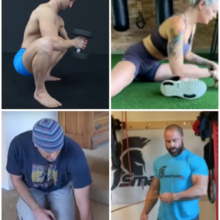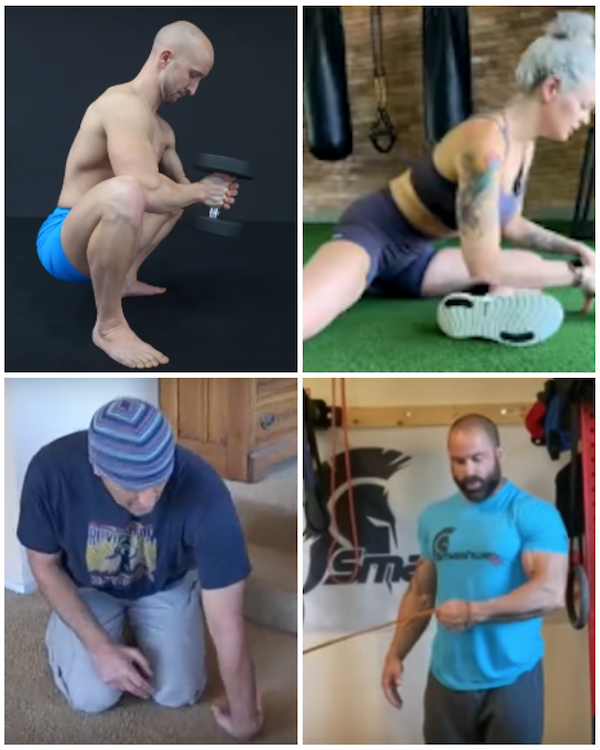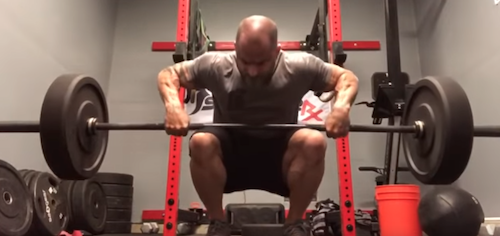Improve Your Joint Mobility As You Age

Improve your joint mobility by following expert instructions in videos curated for you. Every major joint is addressed. Joint mobility = physical freedom, so get at it!
⦿ Joint mobility is unequivocally necessary for health aging. ⦿ You can minimize cartilage attrition, tendon and ligament stiffness and muscle loss by performing joint mobility exercises. ⦿ Watch videos on how to mobilize all the major joints in your body.
Why improve your joint mobility?
Because joint health is the cornerstone of overall mobility and functionality as we age. As our bodies mature, maintaining flexibility and strength in key joints becomes increasingly vital. The neck, shoulders, elbows and wrists, hips, knees and ankles are crucial pivot points that allow us to move freely and perform daily tasks with ease.
There are a mind-boggling number of exercises that can enhance and retain the full functionality of our joints, and so I’m going to help you out by curating video snapshots of how to improve and retain the mobility in your joints.
But before I show you all the joint mobility exercises, let’s review why joint mobility is so important to attain and maintain as you age.
The Importance of Joint Health As You Age
Aging often brings reduced joint flexibility and strength due to factors like decreased synovial fluid production, cartilage wear, and muscle mass decline.
As we get older, it becomes increasingly important to keep our joints limber and strong. This is because our joints tend to degrade as the years pile on, leading to pain, stiffness, and loss of range of motion. Consistent joint mobility exercises mitigate these effects by promoting blood flow, flexibility, and muscle strength — all this combines to help prevent joint stiffness and potential injuries.
There are a number of factors that contribute to joint degradation that joint mobility exercises can ameliorate, including:
- Decreased cartilage production: Cartilage is a smooth, flexible tissue that cushions the ends of bones in joints. As we age, our bodies produce less cartilage, which can lead to the bones rubbing together and causing pain.
- Stiffness of tendons and ligaments: Tendons and ligaments are the tissues that connect muscles and bones. As we age, these tissues become less elastic and more prone to tearing.
- Loss of muscle mass: Muscles play an important role in supporting the joints. As we age, we tend to lose muscle mass, which can make it more difficult to maintain joint stability.
Here are some of the key benefits of joint mobility exercises:
- Improved Range of Motion: Mobility exercises help us maintain and improve our range of motion, allowing us to perform daily activities with greater ease and comfort.
- Enhanced Balance and Stability: These exercises can help improve balance and stability, reducing the risk of falls and related injuries, which is particularly important as we age.
- Reduced Joint Pain and Stiffness: Regular mobility exercises can alleviate joint pain and stiffness, enhancing comfort and mobility in daily life.
- Maintained Muscle and Joint Function: By engaging in mobility exercises, we can maintain proper muscle and joint function, which is essential for independent living and overall well-being.
- Improved Mental Health: Physical activity, including mobility exercises, has been shown to improve cognition and boost mental health, contributing to overall well-being.
- Cardiovascular Health: Engaging in mobility exercises can contribute to cardiovascular health, helping to keep the heart healthy and blood pressure in check.
- Independence and Confidence: By maintaining mobility, we can retain our independence and confidence as we get old, leading to a more fulfilling and active lifestyle.
OK, now that you know the “why” behind the necessity of doing joint mobility exercises, let’s get after the “how”.
How to Improve Your Joint Mobility
Fortunately, there are a number of things we can do to slow down the progression of joint degradation and maintain our mobility. One of the most important things we can do is to regularly perform mobility exercises.
There is no single best mobility exercise for everyone, as the best exercise for each joint will vary depending on individual needs and abilities. However, there are several exercises that are generally considered to be beneficial for most people.
Dedicating time to improve your joint mobility is pivotal for preserving and improving joint health, which naturally translates into a more physically robust healthspan.
You must be consistent — performing these exercises daily, even for a few minutes, significantly enhances joint flexibility and strength.
Here’s a breakdown of the joint mobility exercises:
- All-in-one routine
- Neck mobility
- Shoulder mobility
- Elbow and wrist mobility
- Hip mobility
- Knee mobility
- Ankle mobility
As mentioned earlier, I combed through dozens of YouTube and Instagram videos in order to find the gems to share with you. So let’s dive in…
The all-in-one full joint-complex routine
The routine shown in the video below comes from the excellent Cali Move YouTube channel. In this video, Alex Lorenz shows you how to improve your joint mobility in every major joint except the neck, which I’ll cover below.
You are unlikely to be able to do the full routine, but try anyway. You’ll soon discover what you need to work on. Don’t be discouraged. You’re not in competition with Alex. Just start from where you are, do what you can, be consistent, and the improvements will reward your efforts.
Neck Mobility
Requesting an older individual to squat, run, or lift something overhead swiftly reveals the limitations posed by immobile and weak joints. But the neck reveals its status without the need to move at all, because as we age, this is typically what happens to our neck:
In the next video produced by the Physical Literacy YouTube channel, a restorative mobility routine for the central nervous system is demonstrated, focusing on the neck, shoulders and spine.
Shoulder Mobility
Over the years, I’ve spent many hours watching exercise videos on YouTube looking for inspirational and innovative techniques to incorporate into my own routines. Trevor Bachmeyer, DC is among the few that have taught me a lot.
What follows is Dr. Bachmeyer’s multiple-exercise shoulder and spine routine. You may not want to do it all, do watch it and do select at least on or two movements to try. Your shoulders will thank you.
Elbow and Wrist Mobility
In this video, I take a crack at showing you how to relieve tension in the elbow and forearm — the ubiquitous “golfers” and “tennis” elbow.
For more about elbows and forearms, check out this post.
Hip Mobility
Test if your two hips are balanced, as Tom Morrison directs:
Now here’s what to do about it:
Knee Mobility
Now we’re back to Tom Morrison who with his sidekick Jenny will go through a knee mobility routine that puts an emphasis on your feet:
Ankle Mobility
Last but not least, we end with the ankles. Your ankles have gotten some attention with the knee drills, but let’s give them some focused attention. And for that we again turn to Dr. Trevor Dr. Bachmeyer. He’s going to do a deep dive on this and hurl lots of stuff at you, but don’t despair — just begin with one or two movements and expand from there when ready.
The one thing I don’t recommend you do (unless you’re already an accomplished weight lifter) is this:
You’ll see that in the video, but I suggest you do that deep squat position without load (the weight), and if needed against the wall.
Your Takeaway
Inevitably, aging will negatively impact your joint health if you don’t work to improve your joint mobility. Regular mobility exercises are essential for maintaining joint health as we age. Consistent effort can mitigate joint deterioration, pain and lack of function.
I’ve thrown a lot at you in those videos, but rather than getting overwhelmed, simply choose and perform one or two mobility exercises per joint, and do them regularly, if not daily. As you adapt, add some more. Doing this will slow down or eliminate the progression of joint degradation, reduce pain and stiffness, and improve our range of motion.
Feel young again — improve your joint mobility!
Last Updated on November 19, 2023 by Joe Garma





